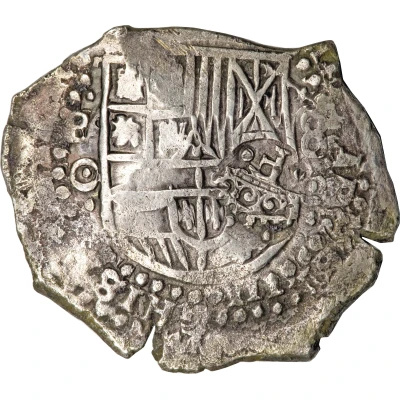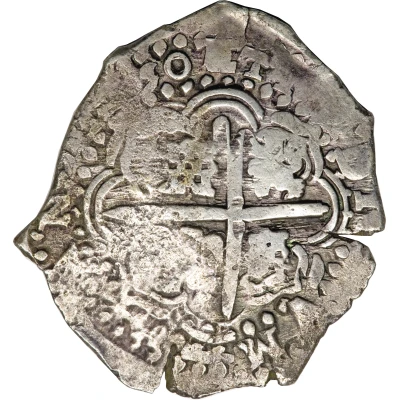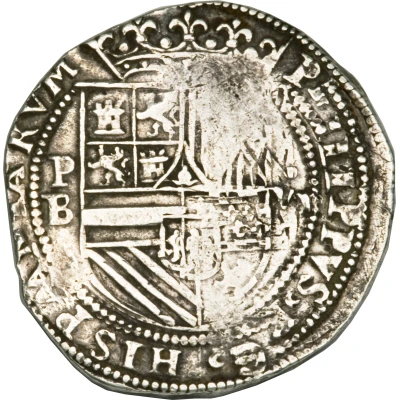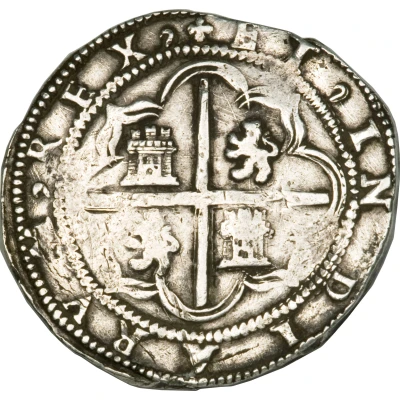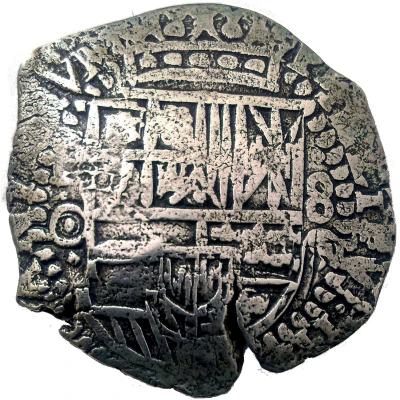
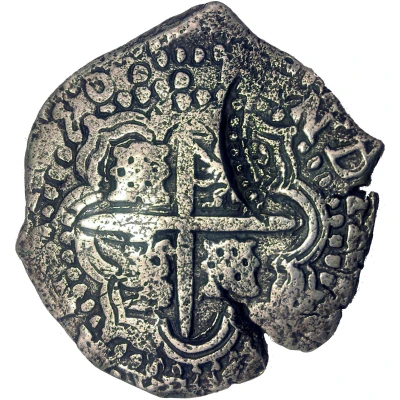

© R.Ch
7½ Reales - Philip IV
| Silver (.859) | 27.06 g | - |
| Issuer | Bolivia |
|---|---|
| King | Philip IV (1621-1665) |
| Type | Standard circulation coin |
| Years | 1649-1652 |
| Value | 7½ Reales (7.5) |
| Currency | Real (1574-1825) |
| Composition | Silver (.859) |
| Weight | 27.06 g |
| Shape | Cob |
| Orientation | Variable alignment ↺ |
| Demonetized | 1657 |
| Updated | 2024-10-04 |
| Numista | N#226557 |
|---|---|
| Rarity index | 94% |
Reverse
("Cross side")
Simple cross with lions and castles in the dials
Simple cross with castles and lions (Castilla y Leon)
+ Crowned arms countermark on the edge (Ecu couronné)
Script: Latin
Lettering: ET.INDIARVM.REX.ANO.1650.
Comment
Coins originally minted in Potosi. Testers Roas, Zambrano or Ergueta (KM#19.b).In 1652, owners of coins minted after 1649 (the last "ecu type") had 8 months to return their coins to one of the "Cajas reales" to have them countermarked, due to the devaluation decided by the King following the Potosi workshop scandal (falsification of silver purity).
Each "Caja de reales" had its own countermark.
Here, KM#C.19.22 is that of the "ecu" or "arms" countermark (very rarely visible, as it is larger than the other countermarks, and always struck on the edge of the coin).
Interesting fact
The 7½ Reales coin from Bolivia, minted during the reign of Philip IV (1649-1652), is an interesting piece of history. One fascinating fact about this coin is that it was made of silver (.859) and weighed 27.06 grams. This is notable because it was a significant departure from the standard coinage of the time, which was typically made of copper or other base metals. The use of silver in this coin's minting process speaks to the wealth and resources available in Bolivia during this period. Additionally, the coin's weight and silver content would have made it a valuable and highly sought-after currency in its time.
